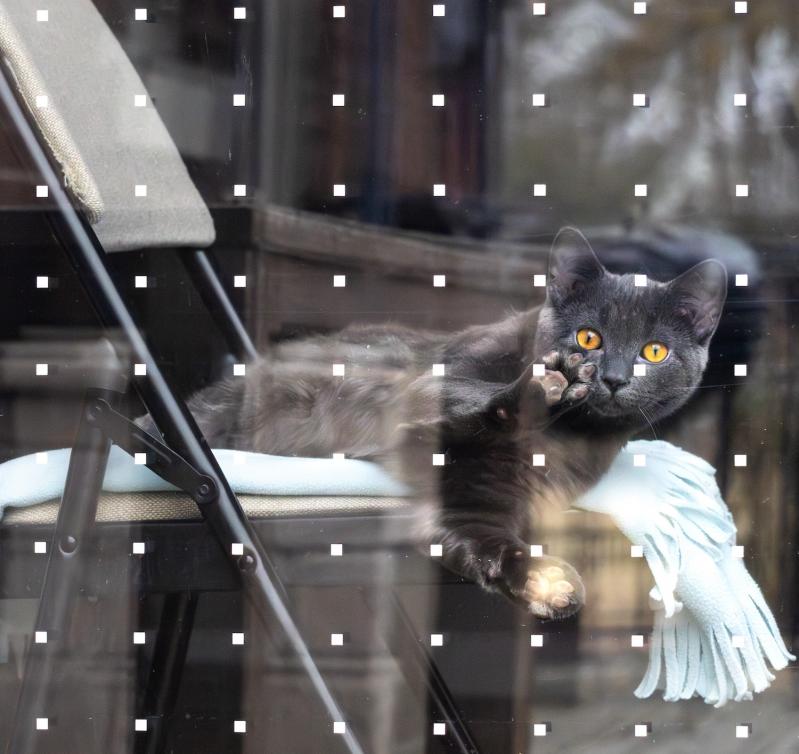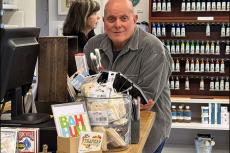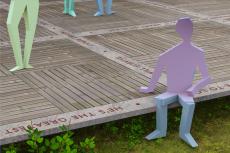In February 2023, Flaco, a Eurasian eagle-owl, was set loose from the Central Park Zoo by an unidentified vandal who had cut through his enclosure. The owl took up residence in the park, eluded multiple attempts at recapture, and became famous. His movements were tracked closely by enthusiasts, and his diet of rats applauded by city dwellers.
Then, after just a year of freedom, he flew into a building on the Upper West Side and died.
Flaco’s celebrity even reached “Saturday Night Live.” During a “Weekend Update” segment, Colin Jost, flanked by a graphic of an owl seeing its reflection in a pane of glass joked, “Flaco will be remembered for his famous last words, ‘Oh cool, another owl.’ “
Joking aside, window strikes kill up to a billion birds annually and rank up there with cats and habitat destruction as the leading causes of recent steep declines.
After Flaco’s death, a bill in the New York Assembly and Senate, originally called the Bird Safe Buildings Act was rechristened the FLACO Act (an acronym for “Feathered Lives Also Count”) and sponsored by State Senator Brad Hoylman-Sigal. “This law will require any new or significantly altered state buildings to incorporate bird-friendly designs, particularly in their windows,” he wrote.
“I’m supportive of the legislation,” said Assemblyman Fred W. Thiele Jr. “It’s a common-sense approach for the state to take reasonable steps to avoid bird fatalities involving state buildings.”
State Senator Anthony Palumbo had an election-year-inspired take, casting Flaco as a crime victim. “It is a sad fact that many of my colleagues on the other side of the aisle have forgotten that crime has consequences. Flaco was roaming the skies of New York because an individual emboldened by the pro-criminal climate in New York vandalized his enclosure and set him free. His tragic death is more a consequence of the lawlessness in our city than that of skyscrapers or other unfriendly wildlife features of the urban landscape.” That said, he was “not opposed to adopting policies to protect New York’s wildlife.”
The bill would have little or no impact on the East End.
“We get a lot of window strike patients and only half survive,” said Noelle Dunlop, the director of development at the Evelyn Alexander Wildlife Rescue Center in Hampton Bays. In 2023, the center counted at least 160 birds that needed treatment after a window strike. (That number is surely only a tiny fraction of strikes on the East End.) “Victims run the gamut from songbirds to our most recent window strike patient, a red-tailed hawk.” The hawk was found on its back. Next to it, a dead songbird. “The hawk was probably chasing that bird and they both hit the window,” she said. The hawk had to be euthanized.
People install large windows because they love the view of the world outside of them, but in doing so, they may be harming the very wildlife they enjoy watching. For example, the East Hampton Town Zoning Board of Appeals recently approved a largely glass structure on Sammy’s Beach Road, in the middle of a dune that separates the beach from a harbor: sensitive habitat. There was no talk during the meeting about how the new building might affect birds.
“I suspect very early on in this conversation folks would want to know about practicality,” said Jeremy Samuelson, East Hampton Town’s planning director, when asked if the FLACO Act could ever influence residential site plan reviews here. “How effective are bird-friendly products, how expensive, and then how available are they? My tendency is to say ‘Okay, but we really need to understand what we’re asking people to do.’ Can my staff assess if a product is bird-friendly? Is there a standard rating system?”
Turns out there is. Kaitlyn Parkins, the glass collisions program coordinator for the American Bird Conservancy, said, “You have to be able to say what is a bird friendly material before you could require people to install it.” She is part of a team that tests and rates glass and bird-deterrent patterns. It’s called “tunnel testing.” Wild birds are released into a dark tunnel where side-by-side panels of glass appear to offer an exit. One panel is clear, the other has a pattern of visual markers. (A net stops the bird before it can hit either, and it is released.) When birds avoid the patterned glass, it tells researchers it is an effective deterrent.
But what about aesthetics? “You’ll still end up with a view,” said Paul Groleau, vice president at Feather Friendly, a company whose products are approved by the American Bird Conservancy. “Our markers can be anywhere from 95 to 98 percent effective in preventing bird strikes.” His company has installed over seven million square feet of bird-friendly glass additives since it was founded in 2006.
To the human eye, these markers appear like a grid of dots over the surface of the entire window (only 8 percent of the window is affected). Consumers can choose from different patterns. “In two weeks’ time you don’t even notice them,” said Mr. Groleau. “It’s like looking out a window with a screen. You don’t look at the screen, you look past it.”
The markers are inexpensive and available at shop.featherfriendly.com. A 100-foot roll that can treat a 4-by-4-foot window costs $18.99. Homeowners can install them on their own. Even before Flaco’s death, Mr. Groleau’s business saw a boom during Covid, because people were in their homes and noticing the thud of bird strikes. “Our business is growing exponentially because awareness is increasing.” There are different products for different contexts. Sometimes the issue is windows that reflect the trees or sky; sometimes, as with the walls of a padel court, or a glass pool fence, birds may be attempting to fly through a surface they cannot see.
Bruce Horwith, the owner of Wild Bird Crossing in Bridgehampton Commons, sells another type of bird decal. He took a practical view and said not every window needs to be treated. “If you have a window that’s bad, tackle that.” The decals he sells pick up ultraviolet light, which birds are more sensitive to than humans. Kathleen Mulcahy, who was recently named the executive director at the Evelyn Alexander Wildlife Rescue Center, shared his pragmatism. “I think we have to be realistic. But maybe a plate glass window over a certain size there could be something in the code where it should be treated. That would be my recommendation.”
The laws won’t change overnight, though legislation targeting this problem is “absolutely increasing” according to Ms. Parkins. “There are 25 cities and states that have passed bird-friendly legislation” she said.




